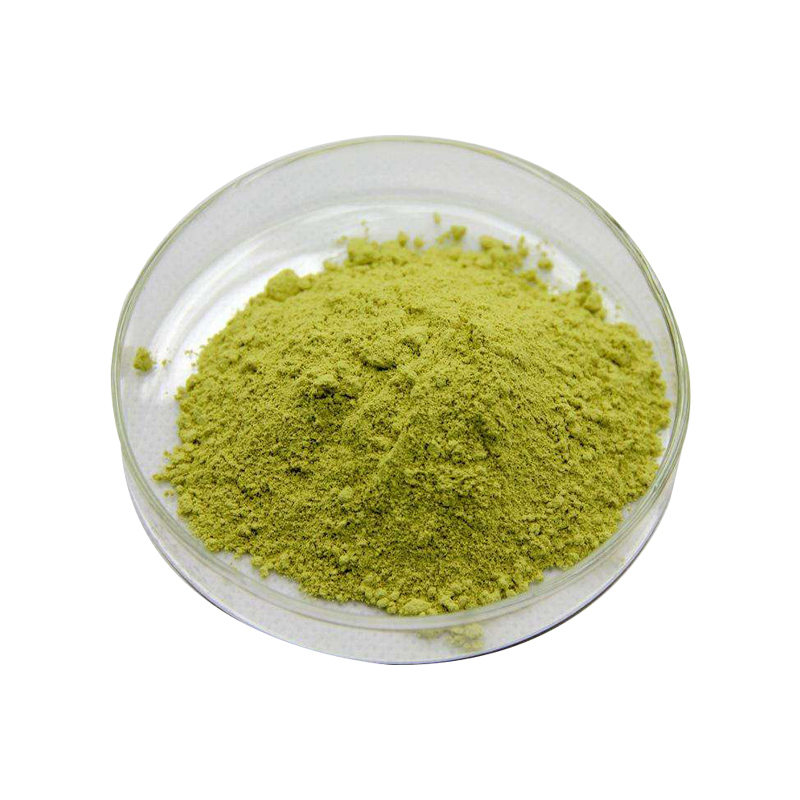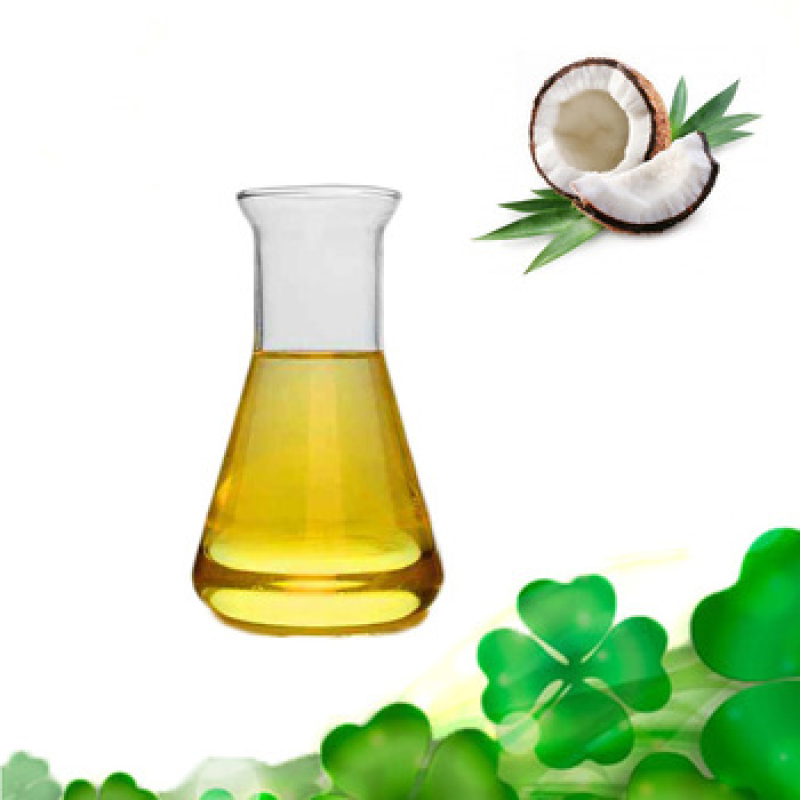Citric Acid Usp CAS#77-92-9At our company, we pride ourselves on offering the highest quality Citric Acid USP (CAS#77-92-9), a versatile organic acid that is widely recognized for its multifaceted applications across various industries.
Contact Now
Products Description of Xylazine Hydrochloride CAS#23076-35-9Xylazine hydrochloride, also known as xylazine hydrochloride, is a sedative veterinary drug.
Contact Now
Products Description of KERATINCAS#68238-35-7Fibrous protein produced by animal epithelial cells. It is the main component of hair, feathers, horns, nails, hooves, silk, etc., and has a protective effect on animals. It can be divided into two categories: one is α-keratin, such as the protein of hair, horns, nails, hooves, etc., which is rich in cystine in the molecule; the other is β-keratin, such as silk fibroin, which does not contain cystine and cysteine in the molecule, but has a high content of glycine, alanine and serine.
Contact Now
Products Description of Trimanganese tetraoxide CAS#1317-35-7Manganese tetraoxide is a black tetragonal crystal, also known as manganese pyroxene, black manganese ore, and active manganese oxide. It is calcined into crystals and belongs to the spinel class. It is an important industrial raw material.Manganese tetraoxide is mainly used in the electronics industry and is a raw material for producing soft ferrites. Soft ferrites are made by sintering and molding manganese, zinc, and iron oxides in a certain ratio.
Contact Now
Cyclohexanol CAS#108-93-0Cyclohexanol is a clear, colorless to light yellow, viscous, hygroscopic liquid with a camphor-like odor. A detection smell threshold awareness of sixty four μg/m3 (155 ppbv) was once said through Punter (1983). It has a pretty excessive flash factor and boiling range. A solvent for cellulose ethers, ester gum,shellac, low viscosity silicones and polyvinyl chloride. lt has a pretty confined use in display screen inks.
Contact Now
Products Description of Zirconium basic carbonate CAS#57219-64-4Zirconium carbonate is a white powdery solid that is soluble in ammonium carbonate and easily soluble in organic acids to form corresponding organic acid zirconium. It is more soluble in inorganic acids, but insoluble in water and organic solvents. It is easily decomposed by heat, so it is not suitable for long-term storage.
Contact Now
Products Description of Ethylamine-borontrifluorideCAS#75-23-0Boron trifluoride ethylamine is mainly used as a latent curing agent for epoxy resin.Ethylamine-borontrifluoride Chemical PropertiesMelting point 85-89 °C(lit.)Boiling point 148°C/1mmHg(lit.)density 1,38 g/cm3Fp 157°Cstorage temp. 2-8°Cform solidcolor White to Light yellowPHpH(50g/l, 25℃) : 4.0~5.6Water Solubility Reacts with water.Sensitive Moisture SensitiveBRN 3672802Exposure limitsACGIH: TWA 2.5 mg/m3NIOSH: IDLH 250 mg/m3InChIInChI=1S/C2H6BF3N/c1-2-7-3(4,5)6/h7H,2H2,1H3
Contact Now
Methylcyclohexane CAS#108-87-2Methylcyclohexane, an alkene, is a colorless liquid with a faint benzene-like odor. The smell thre-shold is 630 ppm (this is above the OEL). Molecularweight = 98.21; Specific gravity (H2O:1)= 0.77; Boilingpoint = 101℃; Freezing/Melting point= - 127℃; Vaporpressure= 37 mmHg at 20℃; Flash point= - 3.9℃ (cc),- 5.9℃ (oc); Autoignition temperature = 258℃. Explosivelimits: LEL= 1.2%; UEL = 6.7%.
Contact Now
Products Description of UV Absorber 326CAS#3896-11-5Ultraviolet absorbers refer to a kind of preparation that can prevent a large amount of ultraviolet rays from passing through.
Contact Now
Products Description of PRL-8-53 CAS#51352-87-5White crystal powderPRL-8-53 Chemical Propertiesstorage temp. under inert gas (nitrogen or Argon) at 2-8°Csolubility DMF: 30 mg/ml DMSO: 30 mg/ml Ethanol: 30 mg/ml PBS (pH 7.2): 10 mg/mlform A crystalline solidInChIInChI=1S/C18H21NO2.ClH/c1-19(14-16-7-4-3-5-8-16)12-11-15-9-6-10-17(13-15)18(20)21-2;/h3-10,13H,11-12,14H2,1-2H3;1HInChIKeyHLBBSWSJLPLPRU-UHFFFAOYSA-NSMILESC(OC)(=O)C1=CC=CC(CCN(CC2=CC=CC=C2)C)=C1.[H]ClFactory and Equipment ShowFast delivery timeInventory 2-3 working days New production 7-10 working days
Contact Now
Products Description of D-(-)-ERYTHROSE CAS#583-50-6D-erythrose-4-phosphate is an intermediate in the enzymatic conversion of carbohydrates.D-(-)-ERYTHROSE Chemical PropertiesMelting point <25℃Boiling point 144.07°C (rough estimate)alpha D20 +1° -14.5° (3 days, c = 11)density 1.0500 (rough estimate)refractive index 1.498storage temp. 2-8°Csolubility Methanol, Waterform syruppka12.49±0.20(Predicted)color light yellowWater Solubility Fully miscible in water.Sensitive HygroscopicMerck 14,3690BRN 1721698CAS DataBase Reference
Contact Now
Products Description of Color Developing Agent CD-3 CAS#24567-76-8White powder crystalColor Developing Agent CD-3 Chemical PropertiesWater Solubility Soluble in waterform powder to crystalcolor White to Light yellow to Light orangeInChIInChI=1S/2C12H21N3O2S.3H2O4S/c2*1-4-15(8-7-14-18(3,16)17)11-5-6-12(13)10(2)9-11;3*1-5(2,3)4/h2*5-6,9,14H,4,7-8,13H2,1-3H3;3*(H2,1,2,3,4)InChIKeyNPDFXFLCEDDWEG-UHFFFAOYSA-NSMILESC1(=CC=C(N)C(C)=C1)N(CC)CCNS(=O)(=O)C.C1(=CC=C(N)C(C)=C1)N(CC)CCNS(=O)(=O)C.S(=O)(=O)(O)O.S(=O)(=O)(O)O.S(=O)(=O)(O)OSafety InformationHazard Codes Xn;N,N,XnRisk
Contact Now
Products Description of 2-(2-Chlorophenyl)acetonitrile CAS#2856-63-5o-Chlorophenylacetonitrile is a chemical with the molecular formula C8H6ClN and a molecular weight of 151.59.2-(2-Chlorophenyl)acetonitrile Chemical PropertiesMelting point 24 °C (lit.)Boiling point 240-242 °C (lit.)density 1refractive index 1.5425-1.5445Fp >110°Cstorage temp. Sealed in dry,Room TemperatureWater Solubility Insoluble in watersolubility Chloroform (Slightly), Methanol (Slightly)form powder to lump to clear liquidcolor White or Colorless to Light yellowFre
Contact Now
Products Description of Thiotriazolin CAS#357172-63-5Colorless liquidFactory and Equipment ShowFast delivery timeInventory 2-3 working days New production 7-10 working days
Contact Now
Products Description of GALL CAS#8008-63-7Ox bile, the bile or bile of cattle or buffalo. It has the effects of clearing the liver and improving eyesight, promoting bile and clearing the intestines, detoxifying and reducing swelling. Fresh cattle gallbladders are kidney-shaped, about 18 to 20 cm long, about 5 to 6 cm at the widest point, and become cystic with longitudinal wrinkles after drying.
Contact Now
Products Description of 1-(4-Chlorophenyl)Piperazine Dihydrochloride CAS#38869-46-4Para-Chlorophenylpiperazine (pCPP) is a psychoactive drug of the phenylpiperazine class. It is relatively obscure, with limited human use, and produces slightly psychedelic effects.
Contact Now
Products Description of 2-Chlorothiophene CAS#96-43-52-Chlorothiophene is used as an intermediate in organic synthesis and medicine. 2-Chlorothiophene CAS#96-43-5 Chemical PropertiesMelting point -71.9 °CBoiling point 127-129 °C (lit.)density 1.286 g/mL at 25 °C (lit.)refractive index n20/D 1.547(lit.)Fp 73 °Fstorage temp. 2-8°Csolubility soluble in Chloroformform LiquidSpecific Gravity1.286color Clear colorless to light brownWater Solubility INSOLUBLEBRN 104652Stability:VolatileInChIKeyGSFNQBFZFXUTBN-UHFFFAOYSA-NC
Contact Now
Products Description of 5-{4-[2-(5-Ethyl-2-pyridyl)ethoxy]benzyl}-2-imino-4-thiazolidinone CAS#105355-26-8Organic and pharmaceutical synthesis intermediates, can be used to synthesize pioglitazone hydrochloride.5-{4-[2-(5-Ethyl-2-pyridyl)ethoxy]benzyl}-2-imino-4-thiazolidinone Chemical PropertiesMelting point 187-188°CBoiling point 557.4±60.0 °C(Predicted)density 1.28storage temp. Sealed in dry,2-8°Csolubility DMSO (Slightly, Heated), Methanol (Slightly, Heated)pka5.53±0.22(Predicted)form Solidcolor Light Brown to BeigeCAS DataBase Reference105355-26-8(C
Contact Now
Products Description of Isopropyl alcohol CAS#67-63-0Isopropyl alcohol is also known as fire wine, dimethyl methanol, 2-propanol, English: isopropylalcohol, the simplest secondary alcohol, and one of the isomers of n-propanol.A colorless, flammable liquid with a strong odor, similar to the smell of a mixture of ethanol and acetone, but not very strong. It is soluble in most organic solvents such as water, alcohol, ether, benzene, chloroform, etc., and can be miscible with water, alcohol, ether, and can form an azeotrope with water.
Contact Now
Products Description of Poly(L-lysine hydrobromide) CAS#25988-63-0Antioxidants, Chelating Agents, PreservativesPoly(L-lysine hydrobromide) Chemical Propertiesstorage temp. 2-8°Cform lyophilized powderStability:Stable. Incompatible with strong acids, strong bases. Safety InformationWGK Germany 3F 3-10Product Application of Poly(L-lysine hydrobromide) CAS#25988-63-0Only a trace amount of polylysine needs to be added to food to be effective, and it will not affect the taste of the food. It can be used as a natural preservative for food.
Contact Now
Products Description of Benzyltributylammonium bromide CAS#25316-59-0Benzyl tributylammonium bromide is an organic substance with the chemical formula C19H34BrN, a white powder.
Contact Now
Products Description of Methotrexate CAS#59-05-2This product is a good anti-tumor drug and is used for acute lymphoblastic leukemia, lymphoma, malignant hydatidiform mole, choriocarcinoma, squamous cell carcinoma, lung cancer, cervical cancer, breast cancer and osteosarcoma Chemicalbook. 90% of the original drug of methotrexate is excreted in the urine 12 hours after oral administration, and the main metabolite is 7-hydroxymethotrexate.
Contact Now
Products Description of Vitamin E CAS#59-02-9Natural vitamin E is a brown-red or transparent light yellow oily liquid with a mild, special smell and taste. Easily soluble in ethanol, acetone, ether, chloroform or vegetable oil, almost insoluble in water. It has a high boiling point (250°C) and is stable to heat. It oxidizes when exposed to air and light and turns dark red. It has no calories and does not participate in human metabolism. Natural vitamin E has the functions of whitening spots, preventing skin aging, regulating endocrine, and preventing high blood pressure and blood clots.
Contact Now
Products Description of Tetramethylammonium hydroxide CAS#75-59-2Tetramethylammonium hydroxide (TMAH), also known as tetramethylammonium hydroxide, is a colorless to light yellow liquid. It is the strongest organic base, very easy to absorb moisture, has a certain ammonia smell, can quickly absorb carbon dioxide in the air, has a low vapor pressure at room temperature, and is completely decomposed and gasified at 135~145°C. High-purity products are treated at 140°C without trace residue. The tetramethylammonium hydroxide solution is colorless, transparent, and has a slight ammonia smell.
Contact Now



















![5-{4-[2-(5-Ethyl-2-pyridyl)ethoxy]benzyl}-2-imino-4-thiazolidinone CAS#105355-26-8](https://sdluxicdn.huazhi.cloud/cdn/ff/gm15_9BNSlbRhwqzlF1wuCfBgbbPWFKW4n1ojiSFsP8/1718275924/public/styles/chanpinzhutu/public/2024-06/%E7%99%BD%E8%89%B2%E7%B2%89%E6%9C%AB%20%282%29_4.jpg?itok=4_cOesiZ)












